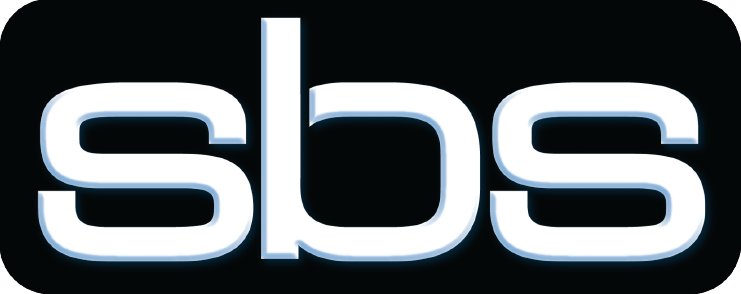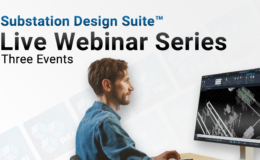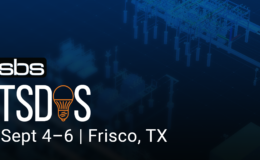This year’s PUG Conference was a great success. The conference was held in Nashville, TN and hosted by Nashville Electric Service. We feel that there was a lot of great discussion and interaction between presenters and attendees. Below we have compiled the conference notes. We thank everyone who participated and look forward to next year.
Utility DataHub – Analysis Demonstration
SBS Demonstrated the capabilities of the UDH – Analysis tool for SPIDACalc. Basic SPIDA results are stored in AUD as feature attributes, where AUD rules can use them to generate warnings or errors for validation.
The interface is not intended to replace SPIDA power users and expertise; the interface supports basic analysis and results without ever requiring users to use or be trained in SPIDACalc.
Autodesk clarified that AUD does not actually conform to engineering standards out of the box, as they do not have the engineering staff to maintain multiple standards. Future releases of AUD will focus on ordering and 3D modeling while using APIs to connect to engineering-specific solutions.
Q&A
- Can SPIDA be used as the sole engineering tool?
- Yes, if linear analysis is not a concern. For utilities with flat land profiles or high design standards, pole analysis may be sufficient.
- Is it possible to bring field data of existing assets into SPIDA?
- Both SPIDA and AUD have functionality that enables them to bring in data from GIS.
- What other formats can SPIDA export data in?
- SPIDA exports full information as an XML file, which can be read as a wide variety of formats.
- Does SPIDA support multiple standards for large service areas?
- SPIDA has different analysis scenarios. UDH can run analysis through appropriate scenarios for geographic zones.
SBS Integrated Workflow
The SBS Integrated Workflow (via Utility Data Hub – Design) was presented. Work orders are copied into a SQLite database; this allows adding or splitting information from work orders without directly affecting the work management system (WMS) database. Work order information is saved into the .dwg. Status updates to work orders are triggered via the UDH user interface in AUD, and can be configured to trigger updates in the WMS. On completion of a design, designs are published to multiple departments (finance, warehousing, operations, etc).
Q&A
- Is the .dwg the only place data is stored?
- UDH can be configured to export files, including report .pdfs, to multiple platforms.
- Is UDH – Design compatible with Vault?
- Yes, SBS is deploying Vault-linked UDH at two sites
- How easy is it to configure work order browser fields?
- Very easy on client side deployments. Enterprise solutions require server configuration but are reasonable efforts.
- Is an SEDC integration in deployment?
- SBS is Multispeak compliant, which is an SEDC requirement. SEDC does charge for Multispeak work on their end of any configuration.
GIS in Utilities
Tri-Global Software and a utility presented on the use of GIS in utilities. Map 3D was discussed as a solution for mapping complex devices, including banks. Their strongest recommendation for a smooth transition and selecting the correct solution is to perform an in-depth assessment of the full workflow before committing.
Tri-Global’s GPS software in conjunction with the Utility Data Hub interface was discussed. It operates on CUs, which are imported from either Partner or AUD. Primary conductors, secondary conductors, and communications cables are all built into the software. Collected data is imported back into AUD or Partner, where it can be analyzed for engineering and stored as a drawing file.
The primary benefit of a GPS collection software is that it begins the process of building a clean, accurate GIS. Both field surveys and collection of as-built data produce very accurate data. A clean GIS saves time, money, and reduces the risk of injury by reflecting the real-world position of assets. As operations crews begin receiving this clean data back, they buy into the system and begin conscientiously collecting data.
Tri-Global for iOS
Tri-Global is preparing to roll out Tri-Global for iOS early 2016. iOS is a great step forward for field mobile GPS; Windows Mobile limited previous software to 8MB of RAM, limiting performance and peripheral attachments.
The new version will support iPad and iPhone native cameras, as well as USB attachments to read RFID, barcode scanners, laser rangefinders, and any number of Bluetooth-enabled devices.
Larger screens and memory limits make attaching areal .pdfs to points feasible; iOS is also familiar to a wide variety of users and supports a highly intuitive interface.
Autodesk Presentation
- Limitations
- Want to be as open as possible on thinking
- Now allowed to promise features or dates
- “Always been a deep dark secret”
- AUD Agile development
- 3 week sprint cycles
- Last 2015 sprints are to integrate with Map
- Cross-pollination with fixing Map to achieve AUD functionality and vice versa
- Able to incorporate feedback more flexibly with changing prioritization
- Justifying AUD to Autodesk/Why buy AUD?
- Generations and Production
- Gas and electric
- Industry executive issues
- Changing infrastructure
- *Regulatory challenges
- Large project costs/impacts
- Safety and reliability of O&M
- Large Capital Projects
- Utilities spend more on capital than any other industry
- Top 10 utilities spend $3-5 billion
- Best of breed
- Design efficiency: attract and train workforce
- Design innovation: changing infrastructure
- AUD FY16+ strategies
- Design Efficiency
- Layout performance improvements
- Comes from user feedback
- Design & Material analysis
- Gas IM support
- Enhanced final product – terrain & profile (civil 3d)
- Design innovation
- Interactive 2d/3d design
- Underground duct transitions
- Joint Trench, profile, clearances
- Interactive 2d/3d design
- Tiers of Utility Design Solutions
- Baseline (product)
- Layout, material ordering, construction, work order, config/API
- Pre-engineered Analysis (services required)
- Table lookup, load cases, out-of-to-box
- Highest Tier
- Customized solutions (eg PSE)
- Migrating configuration, 3rd party APIs
- Baseline (product)
- Layout performance improvements
- Design Efficiency
- AUD Future strategies
- Industry Drivers for E&G Utility Owners
- Market disruption & the grid
- Evolving acceptance of cloud/mobile models
- Research shows cloud acceptance is inevitable
- Autodesk is dropping forcing utilities to use the Autodesk cloud
- Actively working to have strategy ahead of utilities using cloud
- AUD & Utility strategy
- Support the user base
- Advance beyond design& drafting to construction and network management
- Main buckets
- Support user base: fixes, enhances, features
- Sewer/water, gas
- Design to the field
- Getting tools in the hands of operations
- Foreman can run AUD>SPIDA to spit out pole size
- Grab a piece of the engine via cloud
- Support user base: fixes, enhances, features
- Future offerings
- Underground
- Joint trenching
- Content, documentation
- Design to the Field
- Mostly paper, increasing electronic data
- Interactive real-time model
- Utility 360 mobile
- Move from paper to electronic
- Connect field with electric network/data mngmt
- Underground
- Industry Drivers for E&G Utility Owners
- AUD 2016 Ext 1
- Dave Wilbur
- Extensions
- Legally only allowed larger releases except for true defect fixing
- Intended to be upgrades with minimal impact (data model)
- Has potential to break custom solutions
- Overview
- Material editor improvements
- Layout end editing improvements
- Config tools and rule capabilities
- Analysis enhancements
- Other fixes and improvements
- Improved Material Editor
- General usability/stability improvements
- Sorting and filtering performance
- Filtering by column (work location)
- Parent/Child Assembly validation
- Rollup calculations from child fields
- Large Catalog CU Auto-Complete Performance
- Layout and Editing
- Change line containment/Re-route
- Pulling cable out to re-route through new branch
- Moving conductors between ducts
- UCS (user coordinate system) Support
- Improved Schematic connectivity behavior
- Change line containment/Re-route
- Config Tools and Rule capabilities
- Rules
- Table lookup aggregate
- Used to find specific features, look up analysis results, custom materials
- Delete features
- Improved Custom Feature Class Support
- Better validation, referencing in rules
- Table lookup aggregate
- Configuration tools
- Selection window for AUDCONFIGMANAGE
- Useful to move configuration data between different templates
- More user-friendly, choose specific data
- Update designs: AUDCONFUPDATE
- Create configmanage preference
- Allows importing settings from new templates into an in-progress drawing. E.g. purging blocks on/off
- AUDINDUSTRYMODELREMOVE
- Keeps blocks, polylines, etc. but removes SQLite background
- Apply new model to old drawings
- New Whitepaper
- Selection window for AUDCONFIGMANAGE
- Rules
- Analysis Enhancements
- Voltage drop
- Parallel Secondary/Service
- Total resistance/reactance for fault current
- Load devices for custom diversity, etc.
- Respects device state
- Guying
- Common anchor support (rules)
- Pulling tension
- Voltage drop
- Other
- Gas pipes can be added to segments
- OOTB Gas content
- Improved rules for features at the end of line
- Automatic junction creation
- Connectivity restraint rules
- Pole Head 2D stylization
- Rolling sandbox
- Currently used for Map
- Roll out specific features to testing sandbox after sprints
- Key partners and customer
Other SBS Offerings
- GIS – Design
- Provides one-to-many GIS data translations that DX does not
- Allows GIS and designers to use data in preferred format
- Spatially enabled for bounding polygon queries
- Kyle Baker: transformation questions
- Partner-AUD-SPIDA
- Useful for tiered engineering, escalating design problems
- SPIDA results can trigger AUD rules
- Better archiving than current systems
Miscellaneous Discussion
Infraworks
Infraworks is more useful for IOUs or especially large projects. Its value goes beyond engineering, and is a useful tool for cross-department work. Economic development, budget justification, and public promotion all rely heavily on visual presentation. Some PUG members are working on Infraworks projects and are willing to post them in the PUG.
Detail Drawings
Multiple approaches to detail drawings are viable in CAD. Designers may simply make another sheet in a CAD or design tool with references to the main design. One of the drawbacks to this is that information is often in another system (e.g. manholes in GIS lookup tables).
AUD’s insert detail tool can insert .pdfs, .dwgs, and AutoCAD blocks as callouts using AUD rules to fully generate callout text.




